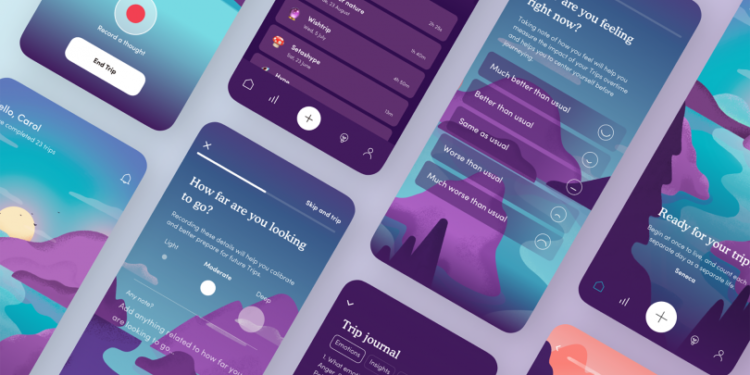Mobile App Design Trends 2024
As we approach 2024, the mobile app landscape is evolving at a staggering pace. With technological advancements, shifting user expectations, and ever-increasing competition, the design of mobile apps is more critical than ever. To succeed in this dynamic environment, app designers must stay ahead of the curve. In this article, we will explore the mobile app design trends that are poised to gain popularity in 2024.
1. Minimalistic and Content-First Design
Minimalism continues to be a dominant force in mobile app design. In 2024, it’s not just about clean lines and simplicity; it’s about content-first design. Apps will focus on delivering relevant content to users without unnecessary distractions. Designers will embrace negative space, elegant typography, and unobtrusive navigation to create an immersive and clutter-free user experience.
2. Dark Mode Evolution
Dark mode isn’t new, but it’s far from being a passing trend. In 2024, dark mode will evolve beyond a simple color scheme change. Mobile apps will offer intelligent dark mode that adapts to users’ preferences and surroundings. Moreover, dark mode will be leveraged for power efficiency, extending battery life on OLED screens, and reducing eye strain.
3. Microinteractions for User Engagement
Microinteractions are subtle, often imperceptible animations or effects that enhance user engagement. From the gentle bounce of a button press to the satisfying sound of a message sent, microinteractions are key to immersing users in the app experience. In 2024, expect to see more creative and purposeful microinteractions aimed at delighting users and making interactions feel more intuitive. Also old techniques of inactive app user engagement should also be looked into from research perspective.

4. 3D Graphics and AR Integration
The rise of augmented reality (AR) and 3D graphics is poised to transform mobile app design. In 2024, apps will use AR to provide users with interactive and immersive experiences. From virtual try-on features for e-commerce apps to navigation assistance through AR overlays, these technologies will shape a new frontier in mobile app design.
5. Voice User Interface (VUI)
Voice commands have become a staple in many mobile apps, but in 2024, we’ll see VUI becoming more integrated and intuitive. Apps will utilize voice recognition for a wider range of tasks, from searching for content to controlling smart home devices. Designers will need to consider voice interactions in their user experience (UX) designs and develop clear and engaging voice feedback.
6. Personalization at its Zenith
User personalization is no longer a unique feature; it’s an expectation. In 2024, mobile apps will use AI and machine learning to provide highly tailored experiences. From recommending content to customizing the user interface, personalization will be at the core of user engagement strategies. Users will feel that the app understands them and caters to their unique needs.
7. Sustainability-Centric Design
With increasing awareness of environmental concerns, mobile app designers are shifting towards sustainability-centric design. This means optimizing apps for lower energy consumption, smaller carbon footprints, and eco-friendliness. Expect to see eco-mode features, energy-efficient UI designs, and reminders encouraging sustainable behavior.
8. Haptic Feedback Advancements
Haptic feedback is essential for enhancing user interactions, and it’s poised to get even better in 2024. With more precise haptic technologies, apps will provide users with a tactile experience that makes them feel more connected to the digital world. Expect a broader range of haptic feedback options and innovative use cases.
9. Dynamic and Adaptive UI
Mobile apps will increasingly adopt dynamic and adaptive UIs. These UIs will adjust in real-time based on user behavior, device capabilities, and contextual information. This ensures that the app provides a seamless experience across various devices and scenarios.
10. Enhanced Accessibility and Inclusivity
In 2024, app designers will continue to prioritize accessibility and inclusivity. Apps will become more user-friendly for individuals with disabilities. Features like screen readers, voice commands, and larger touch targets will become standard inclusions, ensuring that all users can enjoy the app’s functionality.
11. Privacy-Centric Design
In an era of heightened data privacy concerns and stricter regulations (such as GDPR and CCPA), mobile app designers will prioritize privacy-centric design. Apps will need to be transparent about their data collection practices and allow users granular control over their data. User trust will be earned by implementing strong encryption, limiting data access, and emphasizing the secure handling of personal information.
12. Gesture Navigation Evolution
Gesture-based navigation has become a staple feature in mobile app design, especially on devices with edge-to-edge screens. In 2024, we will see gesture navigation evolve further, providing more fluid and intuitive interactions. Designers will experiment with innovative gestures that simplify app navigation, allowing users to seamlessly switch between tasks and access app features with natural and intuitive movements. Gesture navigation will continue to replace traditional buttons, offering a cleaner and more immersive user interface.
In a nutshell
The mobile app design landscape is on the brink of significant transformation in 2024. As designers and developers, it is crucial to stay attuned to these emerging app design trends to create apps that not only meet but exceed user expectations. By embracing minimalistic design, harnessing emerging technologies, and focusing on sustainability and inclusivity, you can ensure your app remains competitive and user-centric in the years to come. As we welcome 2024, let these trends guide your app design journey and foster creativity in shaping the future of mobile user experiences.



















